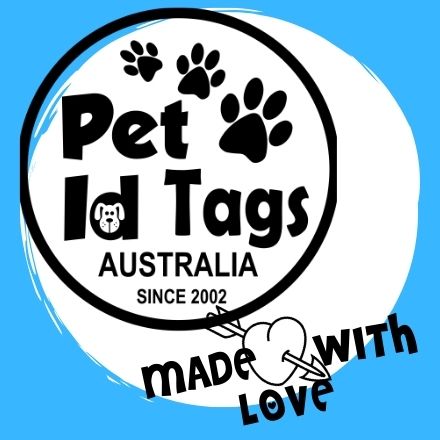Dog tags are more than just a cute accessory; they are a vital safety measure. Losing a pet is a harrowing experience, and while microchips are a great backup, they require a visit to a vet or shelter to scan. The immediacy of a dog tag provides a quick solution, offering vital information to anyone who finds your pet and thereby increasing the chances of a prompt reunion. In situations where time is of the essence, such as when your pet is lost in an unfamiliar area, having a tag can be the quickest way to ensure their safe return.
Moreover, dog tags serve as a visible cue to the public that your pet has a home and is not a stray. This can prevent well-meaning individuals from assuming your pet is homeless and taking them in without trying to find the original owner. Additionally, tags provide a level of accountability, as they convey that you, as a pet owner, have taken steps to ensure your pet's safety. This not only reflects responsible pet ownership but also encourages others to do the same.
Essential Information for Dog Tags
Your Dog's Name
Including your dog's name on the tag is a common practice. It helps the person who finds your pet to address them by name, which can be comforting for your dog in a stressful situation. Dogs often respond positively when they hear their name, which can make them more approachable to strangers. However, some experts suggest leaving the name off in case someone tries to steal your pet and pass them off as their own. The decision to include the name ultimately depends on your comfort level with this risk.
Another perspective is that including the dog's name can create a sense of familiarity and trust between your pet and the finder, potentially calming an anxious animal. For pets who may be wary of strangers, this small detail can make a significant difference in their behavior and receptiveness to help. Weigh the pros and cons carefully and decide what feels right for you and your pet's unique needs.
Your Phone Number
Your phone number is perhaps the most critical piece of information to include on a dog tag. Ensure that the number is current and consider adding a secondary contact number, such as a family member or friend, in case you cannot be reached. Having multiple contacts increases the likelihood that someone will be available to respond promptly to a found pet situation.
Including an international dialing code can also be beneficial if you live in an area frequented by tourists or near an international border. This small detail can prevent delays in communication and ensure that anyone, regardless of where they are from, can reach you with ease. Remember, clarity and accessibility are key when it comes to providing contact information on a dog tag.
Address or City
Including your full address can be helpful, but some pet owners prefer to list only their city and state for privacy reasons. This gives enough information for someone to know where the dog is likely from without giving away too much personal data. It strikes a balance between providing useful information and maintaining your privacy.
If you decide to include your full address, consider using a P.O. Box instead of your home address to further protect your privacy. Alternatively, providing just your city or neighborhood can still be effective, as it allows the finder to narrow down the possible area for your pet's home, especially in smaller communities or rural areas.
Microchip Information
If your dog is microchipped, it's a good idea to note this on their tag. This way, if your contact information changes and isn't updated on the tag, a vet or shelter can still scan the microchip to find your current details. This serves as a backup plan, ensuring there is always a method to identify your pet.
Including a note like "Microchipped" or the microchip ID number can also reassure finders that there is a systematic way to locate the owner. It emphasizes that the pet is cared for and has an established identity beyond the tag itself. This can be particularly useful in cases where the tag gets damaged or hard to read over time.
Special Needs or Medical Information
If your dog has specific medical needs or allergies, you can include this information on their tag. For instance, "Needs Medication" or "Allergic to Wheat" can inform a finder of any urgent care your dog might require. This information is crucial in ensuring the immediate well-being of your pet.
Including medical information can also prevent well-intentioned individuals from inadvertently causing harm by feeding your pet something they shouldn't have or delaying necessary medication. The peace of mind this provides can be invaluable, especially if your pet has conditions that require constant monitoring or specific care.
Choosing the Right Dog Tag
Material
Dog tags come in various materials, including stainless steel, aluminum, and brass. Stainless steel is highly durable and resistant to rust, making it a popular choice. Its resilience is ideal for pets that are very active or live in humid environments. Aluminum tags are lightweight, which can be better for smaller dogs, but may wear out more quickly. Their lightweight nature makes them comfortable, but they may not withstand rough play or outdoor adventures as well. Brass tags are classic and durable, but they can tarnish over time. Their vintage appeal and robustness make them a stylish and practical choice, despite the maintenance they might require.
Shape and Size
Dog id tags are available in numerous shapes and sizes, from standard circles and bones to hearts and stars. Choose a size that is appropriate for your dog's breed and comfort. Larger dogs can carry bigger tags, while smaller breeds might need something lighter and less obtrusive. The shape can also be an expression of personality, adding a touch of style to the practicality of the tag.
Consider how the tag will sit on your dog's collar and whether it might cause discomfort during regular activities. Opt for designs that minimize sharp edges or protrusions that could snag. Ultimately, the shape and size should serve the dual purpose of being visible and comfortable for your pet.
Customization Options
Many services offer custom dog tags where you can choose the font, icons, and even colors. While customization can make the tag more visually appealing, ensure that the text is easy to read and not overly cluttered. The primary function of the tag is to convey information quickly and clearly.
Consider using contrasting colors for the text and background to enhance readability. While adding decorative elements, ensure they do not detract from the essential details. Remember, the focus should be on functionality first, aesthetics second.
Durability
Consider the lifestyle of your dog when selecting a tag. If your dog is active, swims frequently, or spends a lot of time outdoors, opt for a tag that will withstand these conditions. Waterproof and scratch-resistant options are available for dogs with adventurous lifestyles. These features ensure that the tag remains legible and intact despite exposure to various elements.
Assess the environmental conditions your pet is typically exposed to, such as saltwater, mud, or dense vegetation, and choose a tag that will endure these challenges. A durable tag not only lasts longer but also reduces the frequency of replacements, saving you time and effort in the long run.
Additional Considerations
Double Check Information
Before finalizing the engraving, double-check all the information for accuracy. Even a small typo in your phone number can make it difficult for someone to contact you if your dog is found. Taking the time to verify details can prevent unnecessary delays in reuniting with your pet.
Consider having someone else review the information as well, as a fresh set of eyes might catch errors you missed. This simple step can make a significant difference in ensuring the efficacy of your dog's tag.
Regularly Update Tags
It's easy to forget, but regularly updating your dog's ID tags is crucial. Any change in your contact information should be promptly reflected on the tag to ensure it remains an effective tool for reuniting with your pet. Even changes like a new phone number or moving to a different city warrant an update.
Set reminders to review the tags periodically, perhaps during annual vet visits, to ensure they are current. This proactive approach ensures that your pet's identification is always reliable.
Backup Tags
Consider keeping a backup tag at home in case the original is lost or damaged. This way, you can replace it immediately without having to wait for a new one to be made. Having a backup ensures that your pet is never without identification, even temporarily.
Consider rotating tags periodically to distribute wear and extend their lifespan. This practice not only ensures that you always have a functional tag but also provides an opportunity to check for wear and tear regularly.
Use With a Collar and Harness
While tags are essential, they should be used in conjunction with a secure collar and harness. This reduces the risk of your dog slipping out of their collar and losing their identification altogether. A well-fitted collar ensures that the tag remains with your pet, while a harness can provide additional security during walks or outings.
Ensure the collar and harness are comfortable and do not chafe or irritate your dog's skin. Regularly check these accessories for wear and replace them as needed to maintain their effectiveness.
Conclusion
Dog tags are a simple yet effective way to protect your pet and ensure they can be returned to you if they ever get lost. By including essential information like your contact details and any medical needs, and choosing a durable, readable tag, you can provide your dog with an extra layer of security. Remember to keep the information current and consider having a backup on hand. With the right dog tag, you can have peace of mind knowing that your beloved pet has a better chance of coming home safely. Being proactive with these considerations ensures that your pet is always prepared for the unexpected, allowing you to focus on enjoying your time together without worry.




